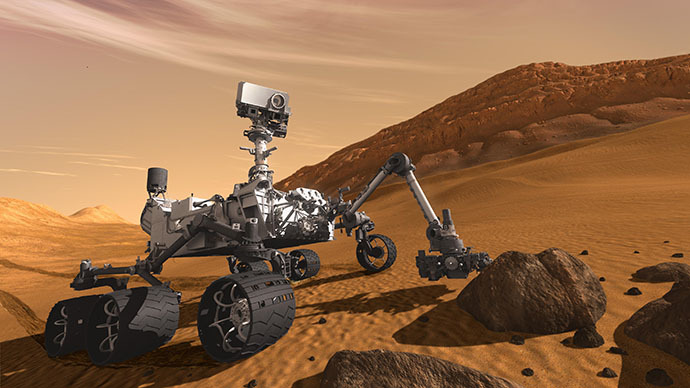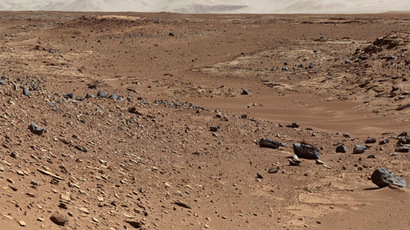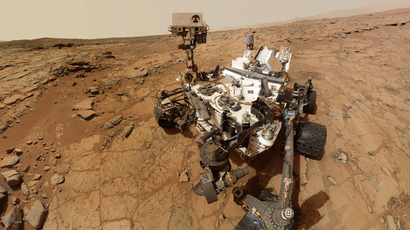Curiosity rover marks its first Martian year with selfie

The Curiosity rover has taken a selfie to commemorate the completion of its first Martian year. NASA’s research robot landed on the Red Planet 687 Earth days ago.
Curiosity arrived on Mars on August 5, 2012. Its mission was to
find out whether the planet’s environment has ever offered
conditions to support life.
In order to take a selfie, the rover extends its robotic arm in
front of itself and turns the camera inward. Curiosity shoots
several pictures of itself and combines them in a montage, in
which its robotic arm isn’t seen.
It’s not the first selfie taken by the rover as it has taken
pictures of itself on many occasions during its journey.
.@MarsCuriosity marks its first full Martian year (687 Earth days) with success: http://t.co/RAQDMRR83s Selfie: pic.twitter.com/h1w5G7Pcms
— NASA (@NASA) June 23, 2014
The rover accomplished a number of groundbreaking discoveries during the first Martian year of its mission.
It took Curiosity just several weeks to succeed in its primary
objective of proving that there might once have been life on
Mars.
The robot drilled into the Martian Gale Crater in the Yellowknife
region and discovered a former lakebed, which, according to NASA,
contained “essential elemental ingredients for life.”
Despite Curiosity completing its task, the scientists decided to
continue exploring the Martian surface while the rover remains
operational.
Its journey is likely to end when its six aluminum wheels, which
have already suffered a number of dents and punctures, break down
rendering the rover non-mobile.
Curiosity made a pause in its movements in spring to collect
sandstone samples in Windjana, an area southwest of its original
landing site, where the anniversary selfie was made.
But it is now continuing its journey, with the mission team
adjusting routes and driving methods to reduce the rate of damage
to Curiosity’s wheels.
"We are getting in some long drives using what we have
learned,” Jim Erickson, Curiosity Project Manager, told
NASA’s website. “When you're exploring another planet, you
expect surprises. The sharp, embedded rocks were a bad surprise.
Yellowknife Bay was a good surprise.”
NASA hopes that the robot will eventually be able to reach its
final destination – 5.5 kilometer tall Mount Sharp.
The scientists believe that the analysis of data, received as the
robot climbs the mountain, will help them understand how and why
the atmosphere on Mars switched from warm and wet to cold and
dry.














